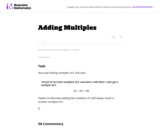
This task asks students to explore multiples of 6.
- Subject:
- Mathematics
- Material Type:
- Activity/Lab
- Provider:
- Illustrative Mathematics
- Provider Set:
- Illustrative Mathematics
- Author:
- Illustrative Mathematics
- Date Added:
- 05/01/2012

This task asks students to explore multiples of 6.

This problem simply asks students to add the tenths and hundredths together.
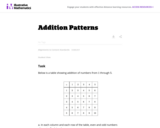
The purpose of this task is to study some patterns in a small addition table. Each pattern identified persists for a larger table and if more time is available for this activity students should be encouraged to explore these patterns in larger tables.
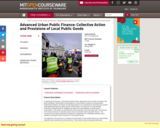
In analyzing fiscal issues, conventional public finance approaches focus mainly on taxation and public spending. Policymakers and practitioners rarely explore solutions by examining the fundamental problem: the failure of interested parties to act collectively to internalize the positive externalities generated by public goods. Public finance is merely one of many possible institutional arrangements for assigning the rights and responsibilities to public goods consumption. This system is currently under stress because of the financial crisis. The first part of the class will focus on collective action and its connection with local public finance. The second part will explore alternative institutional arrangements for mediating collective action problems associated with the provision of local public goods. The objective of the seminar is to broaden the discussion of local public finance by incorporating collective action problems into the discourse. This inclusion aims at exploring alternative institutional arrangements for financing local public services in the face of severe economic downturn. Applications of emerging ideas to the provision of public health, education, and natural resource conservation will be discussed.
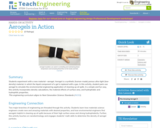
Students experiment with a new materialâaerogel. Aerogel is a synthetic (human-made) porous ultra-light (low-density) material, in which the liquid component of a gel is replaced with a gas. In this activity, student pairs use aerogel to simulate the environmental engineering application of cleaning up oil spills. In a simple and fun way, this activity incorporates density calculations, the material effects of surface area, and hydrophobic and hydrophilic properties.
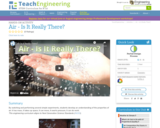
By watching and performing several simple experiments, students develop an understanding of the properties of air: it has mass, it takes up space, it can move, it exerts pressure, it can do work.

Air pressure is pushing on us all the time although we do not usually notice it. In this activity, students learn about the units of pressure and get a sense of just how much air pressure is pushing on them.
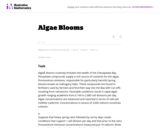
The problem statement describes a changing algae population as reported by the Maryland Department of Natural Resources. In part (a), students are expected to build an exponential function modeling algae concentration from the description given of the relationship between concentrations in cells/ml and days of rapid growth (F-LE.2).

In this game activity students practice comparing shapes and naming something that is alike or different about them.
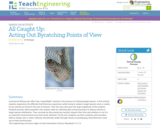
Commercial fishing nets often trap "unprofitable" animals in the process of catching target species. In this activity, students experience the difficulty that fishermen experience while trying to isolate a target species when a variety of sea animals are found in the area of interest. Then the class discusses the large magnitude of this problem. Students practice data acquisition and analysis skills by collecting data and processing it to deduce trends on target species distribution. They conclude by discussing how bycatch impacts their lives and whether or not it is an important environmental issue that needs attention. As an extension, students use their creativity and innovative skills to design nets or other methods, theoretically and/or through hands-on prototyping, that fisherman could use to help avoid bycatch.

Bycatch, the unintended capture of animals in commercial fishing gear, is a hot topic in marine conservation today. The surprisingly high level of bycatch about 25% of the entire global catch is responsible for the decline of hundreds of thousands of dolphins, whales, porpoises, seabirds and sea turtles each year. Through this curricular unit, students analyze the significance of bycatch in the global ecosystem and propose solutions to help reduce bycatch. They become familiar with current attempts to reduce the fishing mortality of these animals. Through the associated activities, the challenges faced today are reinforced and students are stimulated to brainstorm about possible engineering designs or policy changes that could reduce the magnitude of bycatch.

Aerogel, commonly called "frozen smoke," is a super-material with some amazing properties. In this lesson and its associated activity, students learn about this silicon-based solid with a sponge-like structure. Students also learn about density and how aerogel is 99.8% air by volume, making it the lightest solid known to humans! Further, students learn about basic heat transfer and how aerogel is a great thermal insulator, having 39 times more insulation than the best fiberglass insulation. Students also learn about the wide array of aerogel applications.
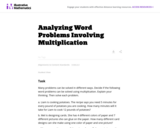
In this task, the students are not asked to find an answer, but are asked to analyze word problems and explain their thinking. In the process, they are faced with varying ways of thinking about multiplication.

This task provides a construction of the angle bisector of an angle by reducing it to the bisection of an angle to finding the midpoint of a line segment. It is worth observing the symmetry -- for both finding midpoints and bisecting angles, the goal is to cut an object into two equal parts. The conclusion of this task is that they are, in a sense, of exactly equivalent difficulty -- bisecting a segment allows us to bisect and angle (part a) and, conversely, bisecting an angle allows us to bisect a segment (part b). In addition to seeing how these two constructions are related, the task also provides an opportunity for students to use two different triangle congruence criteria: SSS and SAS.
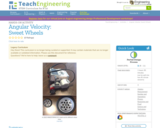
Students analyze the relationship between wheel radius, linear velocity and angular velocity by using LEGO(TM) MINDSTORMS(TM) NXT robots. Given various robots with different wheel sizes and fixed motor speeds, they predict which has the fastest linear velocity. Then student teams collect and graph data to analyze the relationships between wheel size and linear velocity and find the angular velocity of the robot given its motor speed. Students explore other ways to increase linear velocity by changing motor speeds, and discuss and evaluate the optimal wheel size and desired linear velocities on vehicles.
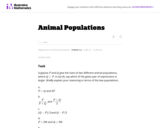
In this task students have to interpret expressions involving two variables in the context of a real world situation. All given expressions can be interpreted as quantities that one might study when looking at two animal populations.
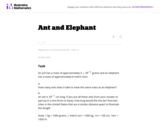
In this problem students are comparing a very small quantity with a very large quantity using the metric system. The metric system is especially convenient when comparing measurements using scientific notations since different units within the system are related by powers of ten.
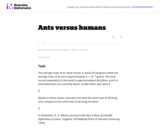
This task requires students to work with very large and small values expressed both in scientific notation and in decimal notation (standard form). In addition, students need to convert units of mass.
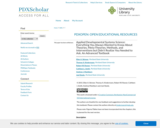
This textbook provides a toolbox, a guidebook, and an instruction manual for researchers and interventionists who want to conceptualize and study applied problems from a developmental systems perspective, and for those who want to teach their graduate (or advanced undergraduate) students how to do this. It is designed to be useful to practitioners who focus on applied developmental problems, such as improving the important developmental contexts where people live, learn, and work, including the applied professions in education, social work, counseling, health care, community development, and business, all of which at their core are concerned with optimizing the development of their students, clients, patients, workers, citizens, and others whose lives they touch.
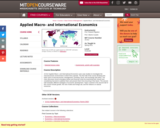
Applied Macro- and International Economics uses case studies to investigate the macroeconomic environment in which firms operate. The first half of the course develops the basic tools of macroeconomic management: monetary, fiscal, and exchange rate policy. The class discusses recent emerging market and financial crises by examining their causes and considering how best to address them and prevent them from recurring in the future. The second half evaluates different strategies of economic development. Topics covered in the second half of this course include growth, the role of debt and foreign aid, and the reliance on natural resources.